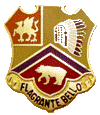 |
Vietnam Involvement
|
||||
Copyright © 2008 - 2025 by 1/83rd Artillery Association. All rights reserved. |
|||||
Vietnam Involvement
New Zealand
Australia and New Zealand
Australia and New Zealand, close allies of the United States and members of the Southeast Asia Treaty Organization (SEATO) and the ANZUS military co-operation treaty, sent ground troops to Vietnam. Both nations had gained experience in counterinsurgency and jungle warfare during the Malayan Emergency and World War II. Their governments subscribed to the Domino theory. Australia began by sending advisors to Vietnam in 1962, and combat troops were committed in 1965. New Zealand began by sending a detachment of engineers and an artillery battery, and then started sending special forces and regular infantry which were attached to Australian formations. Australia's peak commitment was 7,672 combat troops and New Zealand's 552. More than 60,000 Australian personnel were involved during the course of the war, of which 521 were killed and more than 3,000 wounded. Approximately 3,000 New Zealanders served in Vietnam, losing 37 killed and 187 wounded. Most Australians and New Zealanders served in the 1st Australian Task Force in Phuoc Tuy province.
New Zealand – (from Wikipedia)
(Courtesy of Neal Schwartz)Although New Zealand 's involvement in the war was very limited compared to the contributions of some of its allies, it still triggered a large anti-Vietnam War movement at home.
New Zealand protests were similar to those in the United States – criticizing the policies of the United States government and challenging seriously for the first time New Zealand 's alliance-based security, calling for a more 'independent' foreign policy which was not submissive to that of the United States and denying that communism posed any real threat to New Zealand. Campaigns were also waged on moral grounds ranging from pacifist convictions to objections to the weapons being used to fight the war. In the early 1970s, anti-Vietnam war groups organized 'mobilizations', when thousands marched in protest against the war in all the country's major centers. While Prime Minister Holyoake and his government had their own misgivings about the viability of the war, they were consistent in their public belief that they were maintaining both New Zealand's foreign policy principles and treaty-bound obligations. Despite popular sentiment apparently against the conflict, especially in its final years, Holyoake's National Party was re-elected into government twice during the course of the war.
Protest chronology:
- 1967: 21 arrests during an Auckland protest against the visit of South Vietnam ’s Premier, Air Vice-Marshal Ky.
- 1967: A big fight between police and protesters outside the home of the American consul at Paritai Drive in Auckland.
- 1969: Flour bombs, paint and eggs thrown in protest over a visit of a high-ranking United States politician.
- 1969: Fire crackers thrown at an election meeting addressed by the Prime Minister with 30 arrests.
- 1970 January 15: US Vice president Spiro Agnew arrives in Auckland as part of a goodwill visit to US Allied SE Asian nations and is greeted by several hundred anti war protesters. The Protests turned violent after police attempted to disperse protesters, both sides blamed each other for the violence which resulted in many arrests and the first violent modern protest in New Zealand history before the 1981 Springbok Tour.
- 1971: Protests in Dunedin reached the National Party's convention in the centre of the city, resulting in scuffles with police and two arrests and on 30 April, Nationwide anti-war demonstration attracts 30000 people to the streets demanding New Zealand 's immediate withdrawal from Vietnam.There were also numerous protests at Anzac Days, especially in Christchurch, in which anti-war activists attempted to lay wreaths commemorating the dead of both sides, or 'victims of fascism in Vietnam'.
Click on New Zealand in the Vietnam War for more on New Zealand involvement.
Copyright © 2008 - 2025 by 1/83rd Artillery Association. All rights reserved.